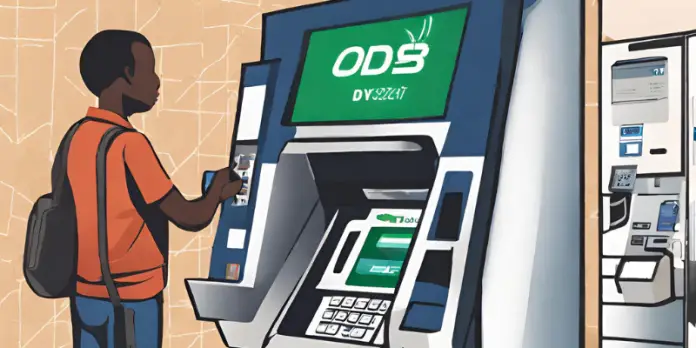Kenya has emerged as a global leader in digital banking innovation in recent years, spearheading initiatives that bridge the gap between traditional banking practices and modern technology. Among these advancements is integrating Cash Deposit Machines (CDMs) into the country’s evolving digital banking landscape.
This article explores the impact of CDMs on Kenya’s financial sector, examining their role in enhancing convenience, promoting financial inclusion, and driving economic growth.
The Rise of Digital Banking in Kenya
Kenya’s journey towards digital banking transformation can be traced back to the early 2000s with the introduction of mobile money services like M-Pesa. This groundbreaking innovation revolutionized financial transactions, especially among the unbanked population, enabling users to conduct various transactions through mobile phones.
The success of M-Pesa paved the way for further advancements in digital banking, positioning Kenya as a frontrunner in financial technology (fintech) on the African continent.
Integration of Cash Deposit Machines
The integration of Cash Deposit Machines (CDMs) into Kenya’s banking infrastructure marks a significant milestone in the evolution of digital banking within the country. CDMs are self-service kiosks that enable users to conveniently deposit cash directly into their bank accounts without requiring assistance from bank tellers or staff.
This innovation not only streamlines the deposit process but also enhances accessibility to banking services for individuals across various regions in Kenya.
These machines accept notes and coins, providing a convenient alternative to traditional bank teller services.
Benefits of CDMs in Kenya
Enhanced Convenience
CDMs offer round-the-clock accessibility, allowing customers to deposit cash at their convenience without being constrained by banking hours.
This flexibility is particularly beneficial for businesses and individuals with busy schedules.
Improved Efficiency
By automating cash deposit processes, CDMs streamline banking operations, reducing wait times and minimizing the risk of errors associated with manual transactions.
This efficiency translates into cost savings for banks and enhanced service delivery for customers.
Promoting Financial Inclusion
CDMs play a crucial role in extending banking services to underserved and remote areas where traditional bank branches are scarce.
By decentralizing cash deposit facilities, CDMs empower individuals in rural communities to participate in formal banking systems, thereby fostering financial inclusion.
Mitigating Security Risks
CDMs incorporate advanced security features such as biometric authentication and surveillance cameras to safeguard against fraudulent activities.
This enhances trust and confidence among users, encouraging greater adoption of digital banking channels.
Driving Economic Growth
The widespread adoption of CDMs contributes to the digitization of financial transactions, which stimulates economic growth by reducing the reliance on cash-based transactions.
This shift towards digital payments accelerates financial intermediation, promotes capital formation, and fosters a more transparent and efficient financial ecosystem.
Challenges and Considerations
Infrastructure Requirements
The successful deployment of CDMs necessitates robust infrastructure support, including reliable power supply, internet connectivity, and maintenance services.
Ensuring the availability of these resources is essential for the uninterrupted operation of CDM networks.
User Education and Awareness
Effective utilization of CDMs requires adequate user education and awareness campaigns to familiarize customers with these machines’ functionality and security features.
Banks and regulatory authorities must invest in outreach programs to promote financial literacy and responsible usage of digital banking services.
Regulatory Compliance
Regulatory frameworks governing cash handling, data protection, and cybersecurity must be adhered to rigorously to mitigate regulatory risks associated with CDM operations.
Banks must comply with industry standards and regulatory guidelines to maintain the integrity and security of their CDM networks.
Cybersecurity Threats
CDMs are susceptible to cybersecurity threats such as malware attacks, skimming devices, and card cloning. Banks must implement robust cybersecurity measures, including encryption protocols, firewalls, and regular security audits, to safeguard against potential breaches and protect customer data.
Future Outlook and Potential Developments
Expansion of CDM Networks
As the demand for digital banking services continues to grow, banks are expected to expand their CDM networks to reach more customers across urban and rural areas. This expansion will further enhance accessibility and convenience for users, driving higher adoption rates of digital banking channels.
Integration with Other Banking Solutions
CDMs are likely to be integrated with other banking solutions such as mobile banking apps and internet banking platforms to offer a seamless banking experience to customers.
This integration will enable users to initiate transactions through multiple channels while leveraging the convenience of CDMs for cash deposits.
Innovation in Technology
Advancements in technology, including artificial intelligence (AI) and machine learning (ML), are poised to revolutionize the capabilities of CDMs.
Future developments may include predictive analytics for cash flow management, personalized user interfaces, and enhanced security features to mitigate emerging cyber threats.
Conclusion
The integration of Cash Deposit Machines (CDMs) represents a significant milestone in Kenya’s journey towards a digitized banking landscape. These self-service kiosks offer many benefits, including enhanced convenience, improved efficiency, and expanded financial inclusion.
However, the successful deployment and utilization of CDMs require concerted efforts from banks, regulatory authorities, and other stakeholders to address infrastructure challenges, promote user education, ensure regulatory compliance, and mitigate cybersecurity risks.
By leveraging the transformative power of CDMs, Kenya is poised to strengthen its position as a trailblazer in digital banking innovation, driving sustainable economic growth and financial inclusion across the nation.
























